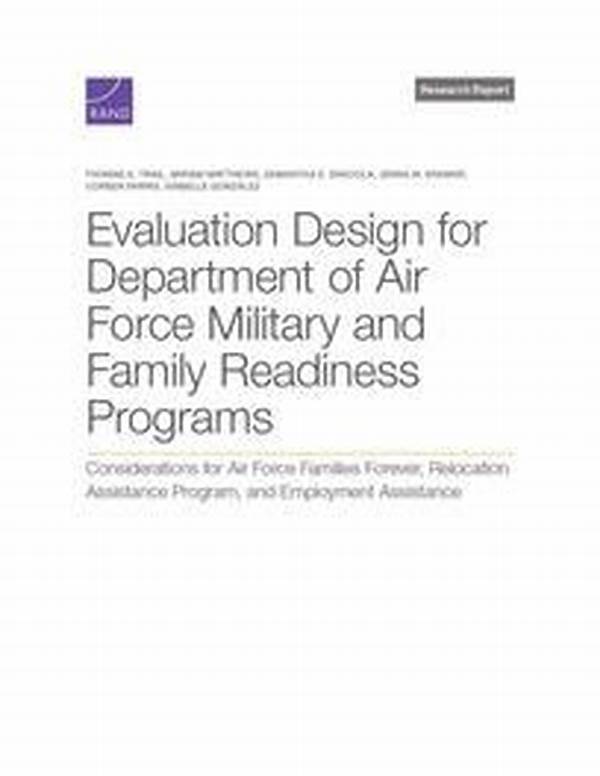Ensuring the operational capability and preparedness of military forces is paramount to national security. To achieve this, force readiness evaluation programs are established as vital tools that assess the efficiency, capability, and readiness of military units. These programs are integral to identifying strengths and weaknesses within forces, allowing for continuous improvement and adaptation to evolving threats. Through systematic evaluations, they provide a framework for analyzing performance, ensuring that the personnel and equipment meet the rigorous standards required to perform their duties effectively.
The Importance of Force Readiness Evaluation Programs
Force readiness evaluation programs play a critical role in enabling military leaders to make informed decisions regarding training, resource allocation, and strategic planning. By closely examining various operational aspects, these programs help in pinpointing areas that require enhancement. This comprehensive approach ensures that forces are adequately prepared for both conventional and unconventional missions. Furthermore, the findings of these evaluations contribute significantly to improving interoperability among different military branches, fostering greater cooperation and coordination in joint operations. They serve as a benchmark for achieving the desired level of readiness across all facets of military operations.
Key Components of Force Readiness Evaluation Programs
1. Training Assessment: Force readiness evaluation programs meticulously review training methodologies to ensure alignment with current military objectives, emphasizing practical exercises that reflect real-world scenarios.
2. Resource Management: Evaluations include an analysis of resource allocation and logistics, ensuring that units have access to the necessary equipment and supplies for optimal performance.
3. Personnel Review: These programs also focus on the competence and morale of personnel, identifying areas that require additional support or development.
4. Operational Capability: Assessment of tactical capabilities and responsiveness is crucial to maintaining a state of readiness for unforeseen contingencies.
5. Interoperability Analysis: Inter-service collaborations and joint force operations are evaluated to ensure seamless cooperation in multilateral environments.
Implementing Effective Force Readiness Evaluation Programs
To execute effective force readiness evaluation programs, military organizations must adopt a multidimensional approach that comprehensively covers all aspects of force operations. This entails regular reviews and updates to the evaluation criteria to reflect the dynamic nature of modern conflicts and technological advancements. Emphasizing a continuous feedback loop, these programs aid in adapting strategies, incorporating lessons learned, and fostering an organizational culture geared towards excellence. Furthermore, the integration of advanced simulation technologies and data analytics enhances the precision and depth of these evaluations, bringing to light intricate operational details that may otherwise be overlooked.
Challenges in Force Readiness Evaluation Programs
The development and execution of force readiness evaluation programs are not without challenges. One primary concern is maintaining a balance between rigorous assessments and the potential strain they may impose on military personnel and resources. Additionally, the dynamic nature of warfare and technological advances necessitate continuous updates to evaluation metrics. Another challenge lies in achieving seamless integration of feedback into actionable improvements, ensuring that any identified deficiencies are swiftly addressed to maintain operational effectiveness.
Advancements in Force Readiness Evaluation Programs
Modern force readiness evaluation programs increasingly rely on advanced technologies such as virtual simulations and data analytics to extend the scope and depth of assessments. These tools enable a more nuanced understanding of force capabilities and provide a detailed analysis of training efficiency and resource allocation. The incorporation of such cutting-edge technologies not only enhances the evaluative process but also ensures that militaries are better equipped to face emerging threats. Furthermore, international collaborations in developing standardized evaluation methodologies contribute to a more cohesive global defense strategy, enabling allied forces to operate in a more synchronized manner.
Future Perspectives of Force Readiness Evaluation Programs
As global security dynamics evolve, force readiness evaluation programs will continue to play a pivotal role in military preparedness. Future iterations of these programs are anticipated to adopt an increasingly integrated approach, combining traditional assessment techniques with modern technological tools. This will involve a closer examination of cybersecurity readiness, given the increasing reliance on digital infrastructures in military operations. The focus will also expand to include hybrid warfare scenarios, emphasizing the need for versatile forces capable of adapting to a wide range of contingencies. Continuous innovation and adaptation will remain key in ensuring these programs effectively anticipate and respond to future security challenges.
Summary of Force Readiness Evaluation Programs
In summary, force readiness evaluation programs are indispensable in securing military competence and preparedness. They are structured to provide comprehensive insights into the efficiency of forces, thereby fostering an environment of continuous improvement. These programs ensure that military units remain agile and responsive to evolving challenges by assessing training effectiveness, resource allocation, personnel readiness, and operational capabilities. Despite facing challenges such as integrating advanced technologies and maintaining a balanced assessment approach, these programs are poised to evolve alongside emerging defense needs. As global intricacies in security continue to grow, these evaluations will increasingly focus on integrating cutting-edge technologies and standardizing methodologies to boost interoperability and preparedness. The ongoing adaptation of these programs promises to sustain military effectiveness in an unpredictable and rapidly changing global landscape.





